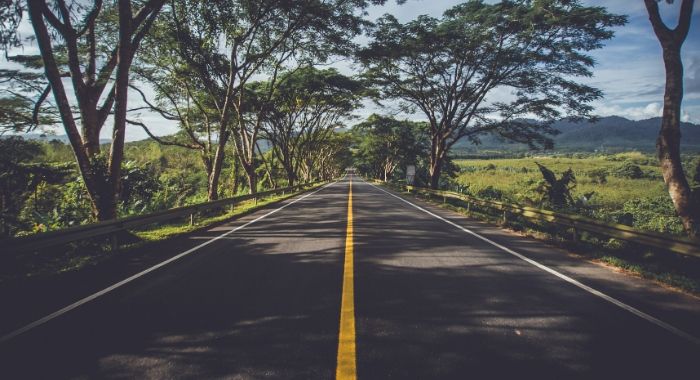Within the realm of road construction, base stabilization and soil stabilization might have been used interchangeably. But in their essence, these industry jargons refer to different processes. Jump into this blog post to understand how similar and different they are from each other.
First of all, let us go over some definitions.
What is Base Stabilization?
Essentially, base stabilization is a process used to stabilize the ground and soil where a road will be constructed.
The main reason why roads fail is water. A base stabilization seals the soil before the construction of a road begins. The waterproofed area prevents any water or humidity from infiltrating and damaging the many layers. Without a strong and sturdy base, a road – made of asphalt or concrete – cannot do its job. Water invites erosion and added to the stress by traffic, causes all kinds of damage to the surface road. Once water is infiltrated is it nearly impossible to permanently fix it without having to excavate everything and start over. Thus, base stabilization gives waterproofing, hardness and smoothness to the road above it. It also maintains the road’s integrity over time.
After the base is applied and cured, the construction of the road can continue.
What is Soil Stabilization?
Soil stabilization is a process of improving, maintaining, or treating the soil as road construction material.
Earth that has not been treated is more likely to have bigger particles. These larger particles have a low bearing. In other words, large dirt particles cannot withstand the weight of traffic. Can’t relate? Picture this: uneven dirt roads filled with potholes that lift up a storm of dust when vehicles drive by. When soil stabilization is conducted, the bigger soil particles are crushed and become smaller. Thus, it boosts the strength and compacts the earth to create a road that has a higher bearing. Now, picture this new scenario: smoother rural roads with little to no dust when vehicles drive by. That is soil stabilization at its finest.
And to keep this rural road on its prime, regular maintenance has to happen. So, spaying the path maintains the vitality of the surface against the elements. Thus, with time there is the accumulation of layers, creating an “asphalt road.”
How are Bituminous Base and Soil Stabilizations Applied?
Base stabilization and soil stabilization are processes applied in a variety of methods with several different materials. One of the most commonly used materials are bitumen emulsions for both processes.
Not only are the names similar, but base and soil stabilization can be done in similar application methods. Two common machines for this job are the Grader or Wirtgen Recycler.
In the case of working with a Wirtgen Recycler, there are separate tanks for the bitumen emulsion and water. The machine will complete several steps all in one process:
1. Mixing the bitumen emulsion with the water to achieve a predefined diluted mixture,
2. Blend the diluted emulsion with aggregate the Wirtgen ripped up from where the machine is, and
3. Reapplying it all onto the ground.
When using the Grader machine, the process is similar to the one above, but done by different vehicles. Usually, a spray tanker sprays a diluted bitumen emulsion onto the ground. Then, a Grader machine incorporates the emulsion and water into the soil.
What is the Main Difference Between Base Stabilization and Soil Stabilization?
After analyzing definitions, purpose, and applications, it is noticeable why base stabilization and soil stabilization have been used interchangeably. They are nearly identical.
However, the main difference is intended design. Base stabilization only happens when an actual road is meant to be built. On the other hand, the repeated application of soil stabilization becomes a road. In essence, vehicles do not drive on a base stabilized layer, however, they can on soil stabilized layers.
Questions?
Let us know by getting in touch with our team.
Published on JUN-30-2020. Last updated on FEB-25-2021.



